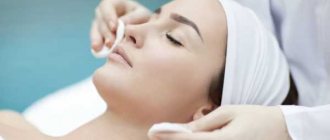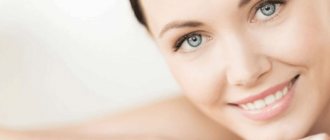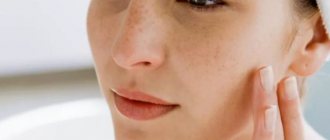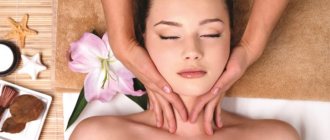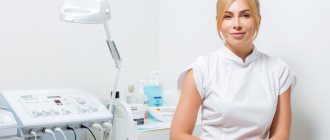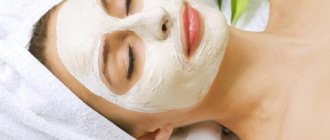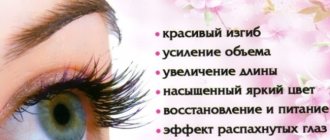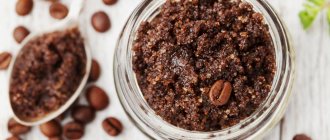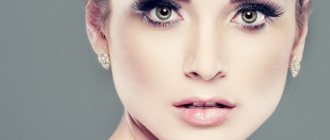The question of how often you need to cleanse your face is one of the most frequently asked. There is no definite answer to this, since much depends on the type and condition of the skin. If it is dirty, black spots, redness and inflammation are noticeable on the surface, more intensive cleansing is required. If the skin looks well-groomed, it still needs to be cleansed, but less often and with more gentle methods. But first things first. Let's look at what methods are used to clean different types of skin and how often they need to be used.
What is attractive about the procedure?
There are different ways to cleanse the skin: using lotions, gels, foams, scrubs, cleansing masks and other cosmetics that can be used at home, as well as procedures in beauty salons - peelings, mechanical, manual, hardware cleansing. Salon methods give a more noticeable effect, which lasts for a long time, but cause many side effects: trauma and microtrauma of the skin, its swelling, redness. Facial cleansing in a salon often requires a recovery period.
Why do many women prefer ultrasonic facial cleansing?
- The procedure is suitable for any skin type at any age.
- The skin is cleansed of comedones, gets rid of dead skin cells and oily sheen.
- Ultrasound affects blood vessels and connective tissue, increasing blood circulation and the production of collagen and elastane - the epidermis becomes more elastic, even, smooth, and its color improves.
- As a result of deep cleansing, the dermis absorbs cosmetics much more actively, and their effect is more pronounced.
- After the procedure, the epidermis does not redden, does not swell, and does not require a long rehabilitation period: cleansing is ideal for sensitive skin.
- The duration of the manipulation is only 30-40 minutes.
- Does not cause pain, only a slight vibration is felt.
Ultrasound cleansing can be alternated with other types of skin cleansing, replacing it with any peeling or mechanical cleansing.
Transitional age
“A girl’s body begins to actively change from the age of 10-11, and this happens over the course of 5 years. Accordingly, during this transitional age, the girl changes not only internally, but also externally due to hormonal changes. At such times, self-dislike often comes due to unwanted external changes (hair, rashes, etc.). And questions arise about what procedures can be done to eliminate this or that problem,” says Timur Khaidarov. Moreover, a whole world of modern cosmetology achievements is open to children and parents.
Article on the topic Cancer, injuries, infections. What can be the danger of a regular manicure? Most procedures are recommended to begin after 13-14 years, when the age of transition approaches completion, the specialist notes. We start giving manicures and pedicures to children as early as childhood, when we cut their nails. So this procedure can be practiced earlier than others at the request of the child and parents.
“Organisms have their own characteristics, and some people are very bothered by the same corns at an early age, so they need to go for a pedicure,” emphasizes Timur Khaidarov.
Many questions arise on the topic of modern coating. “Regarding gel polishes and extensions, it is better to wait for a more conscious age (15-16 years). But you should do it for the first time not with a friend, but with an experienced master, who will advise what will suit you best and do everything correctly. Even for adults, an inexperienced master can easily ruin their nails,” the specialist notes. Same story with eyebrows. “As for hair removal, the same individual story: it is not recommended to start before the age of 13-14, but if this greatly bothers the child and parent, you can contact a professional earlier,” notes the plastic surgeon.
What can be dangerous about a poor-quality manicure or pedicure? More details
How is ultrasonic cleaning performed?
The procedure consists of several stages:
- The cosmetologist prepares the face: removes makeup, cleanses, applies a special mask to open the pores.
- The skin is covered with a special gel, which allows the ultrasound waves to work in the epidermis (they simply die out on dry skin), and also saturates the dermis with useful substances.
- Cleaning is carried out directly: the device for ultrasonic facial cleansing is equipped with a spatula (scrubber), which the cosmetologist moves over the face. The scrubber emits ultrasound waves and removes loose dirt. The device literally pushes dirt, sebaceous plugs, and cosmetic residues out of the pores.
- At the end of the manipulation, a soothing facial massage is performed, a restorative mask and moisturizer are applied.
Ultrasound rays have several types of effects on the dermis:
- mechanical - sound waves create pressure on tissues, massage them, increasing the conductivity of cellular structures;
- thermal - the heat of sound vibrations warms up the skin, it becomes softer, more elastic, and pliable;
- physico-chemical - ultrasound accelerates molecules, as a result of which metabolic processes in the epidermis proceed faster.
Is mechanical facial cleansing outdated? No. We'll tell you when it's needed
Many people consider facial cleansing a relic of the 1990s, when it was considered a panacea for all ills. But it turns out that sometimes this procedure cannot be avoided even now.
Who needs a facial?
For those who have:
- keratinized comedones - pores in which the sebum has oxidized and, together with keratinized cells, has formed a plug that clogs the mouth of the sebaceous gland;
- closed comedones - white convex dots covered with keratinized cells;
- milia - translated from Latin as “millet grain”, this is actually what it looks like: a dense grain consisting of ketatin, sebum and dead skin cells.
They say that cleansing is essential for acne, is that true?
Cleansing is really carried out on acne-prone skin if it has comedones, which we talk about above. But this absolutely cannot be done in the presence of pustular (that is, purulent) and conglobate acne (subcutaneous nodules formed in the deep layers of the skin). Cleaning does not cure acne. This is just one of the procedures that is carried out as part of the selected therapy.
When is cleaning not necessary?
If you are bothered by blackheads and rare rashes. This problem can be solved by adjusting care.
Is it traumatic?
Cleaning is done using a needle and a Uno spoon.
The comedon is opened with a needle, and its contents are squeezed out with a spoon. Bruising and redness are possible after the procedure. But if everything is done according to the rules, the likelihood of unpleasant effects is reduced.
By what rules exactly?
Cleaning includes the following steps:
- cleansing;
- steaming - chemical or using steam (cold or hot) from which the ducts of the sebaceous glands open;
- comedones extraction;
- soothing or anti-inflammatory mask.
Of course, the instruments must be sterile.
It hurts? Is there any way to reduce the pain?
Depends on individual sensitivity, but is usually tolerable. No anesthesia is required.
What not to do after cleaning?
Until the swelling and irritation subsides, you should not sunbathe, take a hot shower or go to the bathhouse, apply makeup (if you really want to disguise something, you can do it with a mineral concealer), touch your face with your hands, or rip off scabs.
Do you need to change your care somehow after cleaning?
After cleansing, care should be reduced to a soft wash gel and a cosmeceutical product with panthenol. It is better to use disposable face towels. You can make fabric masks with healing ingredients (allantoin, chamomile).
Sunscreen outdoors is a must: solar radiation can cause pigmentation of damaged skin.
Once the irritation has subsided (usually 3-10 days), you can return to your usual care routine.
Can they be done during menstruation? And before your period?
It's possible, but it's better not to. The likelihood of bruising becomes higher and the pain threshold decreases, so the sensation may be more unpleasant.
How often can you clean?
On average - once every 3-6 months, and definitely not more than once a month.
They say that such cleansing only stretches the pores, is that true?
No. The size of the pores is determined by genetic predisposition; they cannot be stretched mechanically. Just sebaceous plugs can visually make pores more noticeable. After their removal, the pores, on the contrary, narrow, but not forever.
Can you do this cleaning yourself?
We don't recommend it. Firstly, sterility is important, which is difficult to achieve at home. It is also very important to squeeze out the plug completely, otherwise the remaining part will cause inflammation, and it is not always possible to understand whether everything has been removed. Many people also crush comedones with their nails. You can’t do this either: nails can damage the skin, which will cause scar formation.
And finally, some people can’t resist and squeeze out not the comedones, but the inflamed elements. In this case, the inflammation can spread, and instead of one pimple, five appear.
And there is ultrasonic cleaning. Is this a mechanical replacement?
No. Ultrasonic cleansing exfoliates and removes surface impurities, but does not get rid of closed comedones.
Can acid treatments and peels replace cleansing?
Peelings and acids - prevention of comedones. They exfoliate dead scales and prevent them from clogging pores. If you use them regularly, cleaning is needed less often or not at all. But if comedones have already formed, peeling will not remove them.
Our experts:
Natalya Raevskaya
Chief physician of preventive medicine, cosmetologist, dermatovenerologist at the Gen87 clinic.
Alexandra Gaunt
Dermatologist-cosmetologist with 20 years of experience, specialist in contouring and medical aesthetics. Has an international degree of Doctor of Medicine (MD).
@Dr.Gont
Marina Agapova
Marina Agapova (@dr.marinaagapova) is a dermatologist-cosmetologist, chief physician at Versua Clinic, certified Aptos thread method trainer, Sesderma trainer.
Indications and contraindications
It makes sense to choose ultrasonic facial cleansing if you have the following problems:
- enlarged pores;
- comedones, acne;
- oily or combination skin with a greasy sheen;
- initial age-related changes;
- dull, unhealthy complexion;
- loss of elasticity and skin turgor.
Ultrasonic peeling also has contraindications:
- exacerbation of acne;
- damage to the skin on the face (burns, cuts, boils, etc.);
- noticeable capillary network;
- carrying out chemical peeling, rejuvenation procedures, surgical interventions on the face less than three months ago;
- the presence of metal crowns, brackets, braces, pins;
- gel contour plastic surgery, silicone implants;
- presence of a pacemaker;
- heart and vascular diseases;
- elevated temperature;
- respiratory tract diseases;
- neuralgic disorders;
- hypertension;
- oncology.
The period of pregnancy and breastfeeding, moles or other formations on the face require prior consultation with a doctor and obtaining his permission to perform the procedure.
Peelings
Peels are known as a fairly serious procedure, which is not ideal for every adult.
“Today there are quite a lot of requests from teenagers for this procedure. It can be done, but only if there are indications, which are significantly smaller in children than in adults. These include, for example, seborrhea, acne and post-acne. Peels help reduce the number of enlarged pores, even out the texture of the top layer of skin and reduce hyperkeratosis. In addition, the secretion of sebum in adolescents is facilitated, which is an excellent prevention of the formation of cysts and large comedones,” emphasizes Timur Khaidarov.
Ultrasonic cleaning at home
Ultrasonic cleansing can be done at home yourself if you purchase a manipulation device, the appropriate gel, and learn how to use them. You can choose a gel and device by studying reviews and instructions for use, but only frequent practice will allow you to master all the intricacies of the procedure.
Experts warn that carrying out such experiments on yourself is fraught with side effects:
- swelling;
- skin redness;
- inflammation;
- discomfort or pain;
- local burns;
- tightness and flaking of the skin.
When carrying out home cleaning, you must avoid the neck area, otherwise you can seriously disrupt the functioning of the thyroid gland.
The result of home care is usually less pronounced than in a salon, including because salons use professional equipment and cosmetics. By trusting a specialist, you will get a stronger effect without injuries or other unpleasant consequences.
What should you be wary of?
Of course, there are always concerns about whether the child will get worse. “A bad result can happen if you turn to a bad master. You may not know the teenager’s reaction to a particular drug, hair dye or eyebrow dye, and, accordingly, an allergy may occur. In addition, if you are not a good professional in your field, you can easily ruin your child’s nails, which will take a long time to restore,” notes Timur Khaidarov.
So for beauty with children, go only to professionals. Preferably with a license and the necessary permits.
Question answer
Are there any contraindications for spa treatments?
How to choose an ultrasonic cleaning device?
The choice of portable ultrasound devices is large. To choose the best one for yourself, you should consider the following parameters:
- vibration frequency of ultrasonic waves - the result of the procedure mainly depends on this characteristic; in professional devices it averages from 24 to 30 kHz; in a home model, the frequency should be close to these values;
- power - it gives the depth of penetration of waves into the skin; focus on 0.5-2 W;
- operating modes - the more there are, the more accurately you will find the one that suits your skin;
- additional functions – the more procedures you can perform using the device, the better; some models perform microcurrent rejuvenation, iontophoresis, galvanic lifting and other useful manipulations;
- battery, weight and size - these parameters make the device convenient to use;
- brand recognition - a reputable manufacturer guarantees the safety and uninterrupted operation of the product.
Hardware world and plastic
Today there are a huge number of different hardware techniques on the cosmetology services market. This includes laser hair removal, various lifting procedures, and, of course, various types of plastic interventions. Due to interesting pictures, beautiful results and dissatisfaction with oneself, naturally, many teenagers may request such “difficult” procedures. But is it possible to practice something like this at such a tender age?
“Hardware cosmetology, like plastic surgery, can be done from the age of 18. Until this age, everything is discussed individually based on indications,” says the plastic surgeon.
So most cosmetic procedures for personal care should be selected for children individually, based on requests and existing problems. But in any case, there is no need to rush. Some “defects” under the supervision of a dermatologist can disappear without a trace with age.
How to care for your skin after cleansing?
After the skin has been exposed to an ultrasound cleaning device, it needs maintenance care. Ultrasonic peeling does not damage, but dries the skin, which is very good for the epidermis, which is prone to greasiness. However, after the manipulation, the skin should be pampered with moisturizing creams, serums, and regenerating masks. It is better to choose cosmetics from the “sensitive skin” segment.
To ensure that the effect of the procedure lasts as long as possible, treat your skin with care and attention:
- use sunscreen (SPF at least 20);
- within 24 hours after cleaning, do not visit the solarium, beach, sauna, or gym;
- Do not use decorative cosmetics for 24 hours;
- cleanse the skin using gentle products;
- replace cosmetics containing alcohol with alcohol-free analogues;
- drink more clean water.
Violation of the technique, time or intensity of the procedure may negatively affect the condition of your
Carrying out cleaning
Once everything you need is ready, you can begin cleaning. To avoid damaging the skin and getting the opposite effect, it is recommended to follow the rules.
The first thing you need to do is cleanse your face of dirt and makeup. This can be done using any usual cleanser.
The second step will be the removal of keratinized particles. Any scrub will be suitable for this, both store-bought and homemade. Be sure to lightly moisten your face with warm water before applying the product. Afterwards, massage it with gentle circular movements and leave the scrub for a few minutes.
The third stage of cleaning includes steaming. You should tilt your head over a bowl of hot water or herbal decoction, cover with a towel and steam your face for about 15 minutes. You can add a few drops of antiseptic essential oil to boiling water.
After the skin has steamed sufficiently, it is time for deep cleaning. Using a cosmetic spatula, gently squeeze out blackheads and pimples. After this, you need to wash your face with a decoction of herbs.
Complete the peeling by applying a mask. It is advisable to use natural ingredients - sour cream, honey, vegetables or fruits. After 15-20 minutes, the mask can be washed off and cream applied.
